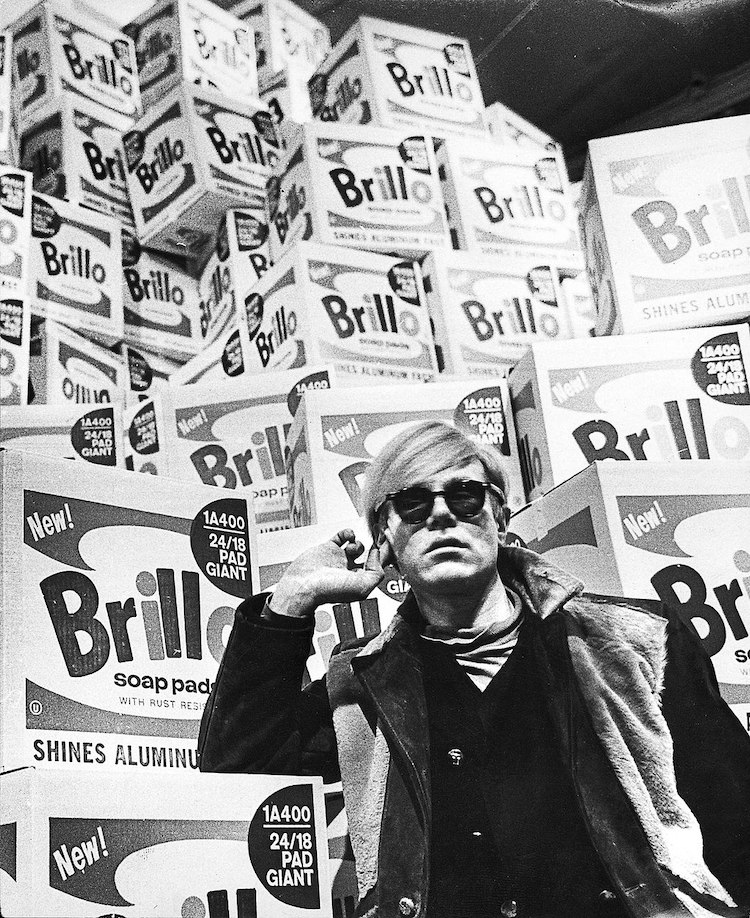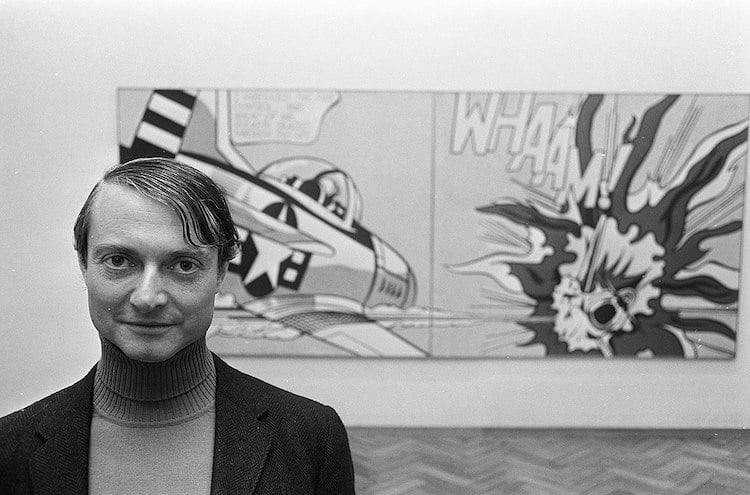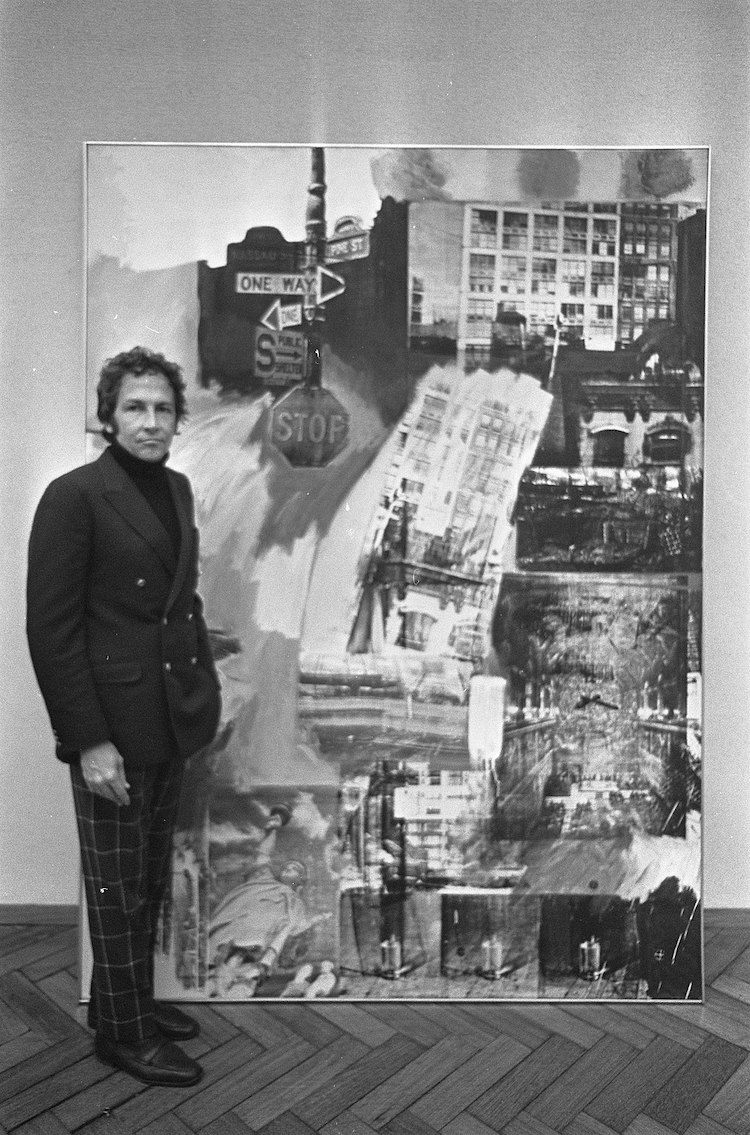6 Pioneering Pop Artists Who Defined The Movement Bridging “High” and “Low” Art
View this post on Instagram
Following the popularity of the Abstract Expressionists, Pop Art breathed new life into the modern art scene during the mid-1950s until the late ‘70s. Artists of the movement aimed to bridge the gap between “high” and “low” culture in order to make art accessible to people of all backgrounds. They borrowed and deconstructed images of consumer and popular culture, often showcasing ordinary objects in a new and colorful light.
In contrast to the emotionally-charged works of Abstract Expressionists, Pop Art artists created works that were composed and ambivalent. They wanted to challenge to values of mass culture, post-war manufacturing, and the media boom. Read on to discover six famous artists who defined the radical movement.
Here are six iconic artists who dominated the Pop Art movement.
Andy Warhol

Andy Warhol, 1968 (Photo via Wikimedia Commons, Public Domain)
When you think of the Pop Art movement, the first artist who probably comes to mind is Andy Warhol. The prolific, trailblazing creative gained worldwide fame during the late 1950s for his colorful silkscreen prints and paintings.
Warhol began his career as a commercial illustrator. In 1949, he was commissioned by Glamour magazine to illustrate shoes for advertisements. Shoes became a bit of an obsession for the artist, but they weren’t the only motif that Warhol visited time and time again. He had a fascination with consumer culture and went on to translate photos of everyday objects—including Campbell's soup cans, boxes of Brillo soap pads, and Coca-Cola bottles—into “mass-produced” paintings.
Using the screen printing technique, Warhol was able to turn out the same image over and over again in multiple colors. “The reason I'm painting this way is that I want to be a machine,” he said in 1963, “and I feel that whatever I do and do machine-like is what I want to do.” Warhol even opened his workshop—affectionately called The Factory—where he produced his work with an assembly line-like team of assistants.
Warhol was also a prominent figure in the New York social scene, and he often explored the connection between celebrity culture and artistic expression. Some of his most iconic works feature famous faces such as Marilyn Monroe and Elvis Presley.
Richard Hamilton
View this post on Instagram
Known as “The Father of the Pop Art Movement,” Richard Hamilton is believed to have been the person to coin the term itself. In a letter to architects Alison and Peter Smithson, he stated, “Pop art is: popular, transient, expendable, low-cost, mass-produced, young, witty, sexy, gimmicky, glamorous, and Big Business.”
Hamilton’s 1956 collage, titled Just What Is It That Makes Today's Homes So Different, So Appealing?, was the first work of pop art to achieve iconic status. Made using images cut out from magazines, it depicts a domestic living space cluttered with catalog consumer items such as a vacuum cleaner, a TV set, and a tape recorder. The black and white image of a muscular man—standing in a bodybuilder's pose—holds a giant lollipop bearing the word “POP” as he points towards the semi-naked woman on the opposing sofa. The work reflects Hamilton’s cynical interest in popular culture and modern technology.
Roy Lichtenstein

Roy Lichtenstein, 1967 (Photo via Wikimedia Commons, (CC0 1.0))
American artist Roy Lichtenstein became a leading figure of the Pop Art movement during the 1960s. Perhaps best known for his paintings inspired by comic books, he created vibrant, high-impact works rendered in his signature thick black outlines and Ben-Day dots. Many of his works were adaptations of pre-existing commercial images and comic book illustrations. One of his most famous works, The figure from Girl with Ball, was inspired by a printed advertisement for the Mount Airy Lodge in Pennsylvania’s Pocono Mountains. Lichtenstein also based his iconic Drowning Girl painting on a comic book cover. He used a projector to trace around the image, replicating the motifs in his distinct dotty style.
The act of “copying” was often met with criticism, and the original artists were often not credited. However, the early disdain towards his work never stopped him from trying to bridge the gap between pop culture and “high brow” art. “I am nominally copying, but I am really restating the copied thing in other terms,” Lichtenstein said. “In doing that, the original acquires a totally different texture. It isn't thick or thin brushstrokes, it's dots and flat colors and unyielding lines.”
Towards the end of his career, Lichtenstein began to move away from his comic-infused artworks. While his bold graphic style remained the same, he began exploring other themes, including reworking famous masterpieces by Van Gogh, Monet, and Cézanne. By doing so, Lichtenstein transformed classic paintings into cartoon-style works that resonate with the modern masses.
Robert Rauschenberg

Robert Rauschenberg, 1968 (Photo via Wikimedia Commons, (CC0 1.0))
American artist Robert Rauschenberg worked in a wide array of mediums including painting, sculpture, and photography. After visiting Andy Warhol's studio in 1962, he was inspired to take up silkscreen printing. He began transferring found photographs and images from magazines and newspapers onto his canvases as a way to visualize the chaos of mass media. His prints were often overlaid with expressive brush strokes in oil paint. By merging painting with photographic printmaking, Rauschenberg bridged the gap between Abstract Expressionism and Pop Art.
David Hockney
View this post on Instagram
Even though David Hockey rejected the idea of labeling his work as Pop Art, he is still considered one of the pioneering artists of the movement. The 83-year-old British artist works as a painter, draughtsman, printmaker, stage designer, and photographer. However, he is perhaps best known for his vibrant paintings of Los Angeles swimming pools.
For one of his most famous works titled A Bigger Splash, Hockney based the painting’s splash on a photograph he found in a pool manual. His aim was to capture the split-second event in a still image. He said of the piece, “I loved the idea of painting this thing that lasts for two seconds: it takes me two weeks to paint this event that lasts for two seconds.”
Keith Haring
View this post on Instagram
Keith Haring’s trademark line drawings are instantly recognizable as his own visual language. He began his career as an underground graffiti artist in NYC but shot to international fame during the 1980s. He used his art to explore topics of social and political importance. In particular, his artwork often deals with themes of homosexuality and AIDS. This subject was of particular importance to the artist, as he himself was diagnosed in 1988. Sadly, Haring’s life was cut short in 1990 when he died of AIDS-related complications at age 31. His legacy, however, lives on.
Aiming to make art more accessible to everyone, Haring opened his Pop Shop in 1986 where he sold posters, t-shirts, and more adorned with his iconic drawings. Even today, his motifs continue to impress art lovers, and his work continues to be exhibited around the world.
Related Articles:
6 Contemporary Artists Who Are Keeping Pop Art Alive Today
7 Colorful Masterpieces That Define the Pop Art Movement
6 Surprising Facts About Pop Artist Roy Lichtenstein
15 Quirky Presents Inspired by Pop Art
READ: 6 Pioneering Pop Artists Who Defined The Movement Bridging “High” and “Low” Art
0 Commentaires